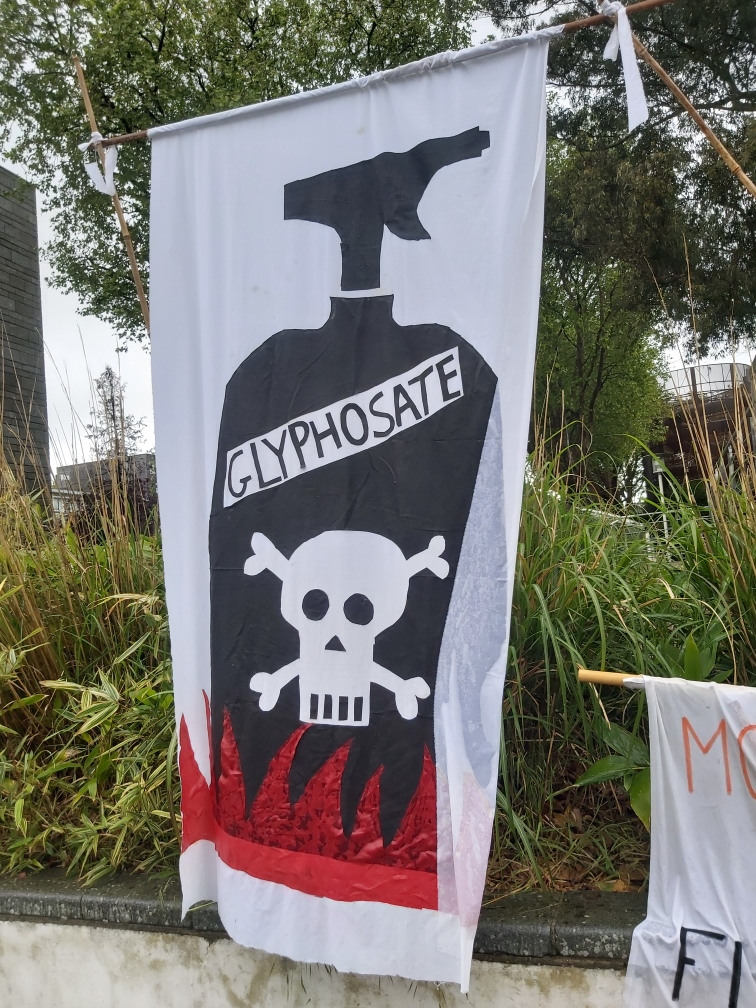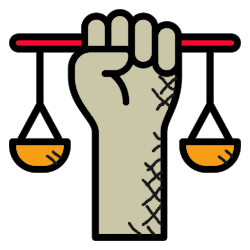De qui se moque t-on ???
Journée nationale de la qualité de l’air : les 20 départements les plus pollueurs et l’échec des politiques publiques de réduction des émissions d’ammoniac.
Chaque année, 40 000 personnes perdent la vie prématurément en France à cause des particules fines. Ce drame silencieux a un nom : l’ammoniac, ce gaz invisible issu de l’élevage industriel qui empoisonne notre air et nos corps. En se combinant à d’autres polluants, il forme des particules mortifères (PM2.5) responsables d’asthmes, de maladies cardiovasculaires et de cancers.
Et pourtant, rien ne change. En cette journée nationale de la qualité de l’air, alors que l’ammoniac est désormais la deuxième cause de mortalité évitable dans notre pays, RAFU dénonce la non régulation de l’élevage industriel, principal responsable des émissions d’ammoniac. Nous refusons que le droit de respirer un air sain soit sacrifié sur l’autel de l’agro-industrie. Il est temps d’agir : réguler, réduire, reconvertir.
40.000 décès par an liés aux particules fines: l’ammoniac, deuxième cause de mortalité évitable en France est un enjeu majeur de santé publique.
La qualité de l’air est un enjeu majeur de santé publique: 40.000 décès par an sont imputables aux particules fines. L’ammoniac est l’un des 3 contributeurs à la formation des particules fines responsables de l’asthme, d’allergies, de maladies respiratoires ou cardiovasculaires, et de cancers. Les oxydes d’azote émis par le trafic routier et le dioxyde d’azote lié au secteur du chauffage (charbon et fioul) sont également responsables. L’ammoniac est la deuxième cause de mortalité évitable dans le pays.
« La principale préoccupation sanitaire concernant l’ammoniac est son impact indirect en tant que précurseur de particules fines. Les particules fines (<2,5μm, PM2,5) sont les plus dangereuses, car elles pénètrent le plus profondément dans l’organisme, par les voies respiratoires puis dans le sang. Elles augmenteraient la fréquence de nombreuses pathologies : asthme, allergies, maladies respiratoires ou cardiovasculaires, cancers etc. Selon le SDES, la pollution de l’air est un enjeu majeur : en France, l’exposition aux particules fines de diamètre inférieur ou égal à 2,5 µm (PM2,5) serait responsable de 7 % de la mortalité totale de la population, soit près de 40 000 décès par an. En d’autres termes, selon l‘Organisation Mondiale de la Santé (OMS), 40 000 personnes décéderaient prématurément chaque année des effets liées aux particules fines (Santé Publique France).
Pénétration des particules atmosphériques dans le système respiratoire selon leur taille
« Il n’y plus aucun doute scientifique : l’ammoniac est une source importante de particules très fines, les PM 2.5, elles-mêmes à l’origine d’une importante mortalité prématurée, pas tant liée aux maladies respiratoires qu’aux maladies cardio-vasculaires », martèle Jean-François Deleume, docteur en médecine, membre d’Eau et rivières de Bretagne, dans le cadre de l’enquête de Splann sur les émissions d’ammoniac. Les particules fines ont des conséquences mortifères très concrètes sur notre santé.
L’élevage industriel est le premier secteur responsable de la pollution de l’air en raison des émissions d’ammoniac.
Une analyse des émissions de particules fines en 2020 est extrêmement préoccupante: pour les particules fines PM2.5, la moyenne journalière de 15 μg/m3 ne doit pas être dépassée plus de 3 à 4 jours par an. Quant à la moyenne annuelle pour ces mêmes particules, elle ne doit pas dépasser 5 μg/m3. L’étude de Bretagne contre les Fermes Usines centrée sur la Bretagne, met en évidence que sur l’année 2020, les valeurs guide de l’OMS ont dépassées 62 fois à Lorient, 59 jours à Vannes, 53 jours à Rennes, 37 jours à Brest et 16 jours à Merléac, mettant la santé publique en grand danger.
La période du confinement de 2020 a mis en évidence la forte responsabilité du secteur agricole. L’année 2020 présente l’exceptionnelle occasion de distinguer l’origine des particules fines sur la Bretagne. Durant cette période, l’arrêt des transports routiers et les températures ambiantes exceptionnellement chaudes réduisant au minimum les chauffages avec chaudières ou poêles à bois a limité les sources de pollution de l’air aux déjections issues des élevages agricoles. Or, malgré cette limitation des secteurs du chauffage et du transport routier, les seuils ont été largement dépassés.
Plus de 97% des émissions d’ammoniac sont en effet d’origine agricole. Les images émises par les satellites européens observant ce polluant en temps réel depuis sept ans laissent peu de doute: en mars-avril, durant les périodes d’épandages de lisiers, de fumier et d’engrais de synthèse, les départements les plus touchés virent au rouge. Hamaoui-Laguel et al arrivaient déjà à la même conclusion en 2014: « Une contribution importante du nitrate d‘ammonium (NH4NO3) aux pics de particules fines est souvent observée au début du printemps, lors de périodes d‘épandage d‘effluents d‘élevage et de fertilisants .
L’ammoniac (NH₃) est en effet un gaz volatil produit par la décomposition de l’urée et des matières azotées présentes dans les déjections animales (urine, fientes, lisier, fumier).Quand les effluents (lisier ou fientes) sont stockés, manipulés ou épandus, l’azote qu’ils contiennent se transforme partiellement en ammoniac, qui s’échappe dans l’air. En termes chimiques et de manière simplifiée, l’urée des déjections animales se transforme en ammonium/azote ammoniacal (NH₄⁺) puis en ammoniac (NH₃, gaz).
Ammoniac : classement des 20 départements les plus pollueurs en ammoniac en France métropolitaine
En raison des conséquences mortifères pour la santé publique de l’ammoniac, il est urgent pour les législateurs de mieux réguler les émissions d’ammoniac afin d’améliorer considérablement la qualité de l’air. Pour cela, il faut mieux comprendre quelles filières agricoles sont particulièrement émettrices.
Les filières industrielles du porc et de la volaille sont largement responsables.
Comment les élevages industriels produisent-ils de l’ammoniac responsable des particules fines?
🐖 Le lisier de porc est un mélange liquide d’urine, de fèces, d’eau de lavage et d’aliments non digérés qui contient une grande quantité d’azote ammoniacal (NH₄⁺). Lors du stockage dans des fosses ou des lagunes), lors du nettoyage des bâtiments, et surtout quand le lisier est épandu sur les champs, et donc exposé à l’air et à la chaleur, l’azote ammoniacal se transforme en ammoniac gazeux (NH3), formant les particules fines.
🐔 Au sein des élevages de volailles (poulets, dinde…), le mécanisme d’émission de particules fines est un peu différent: les fientes sont extrêmement riches en azote, sous la forme d’acide urique. Dans les bâtiments, l’acide urique présent dans les fientes accumulées au sol se décompose en azote ammoniacal par l’action des bactéries puis une partie s’évapore sous la forme d’ammoniac gazeux. Les ventilations rejettent directement l’air chargé d’ammoniac vers l’extérieur, faisant des bâtiments une source directe d’ammoniac dans l’atmosphère. Les litières (mélange de paille, de copeaux et de fientes) sont ensuite stockées et épandus, émettant comme dans la filière porcine de l’ammoniac gazeux responsable des particules fines.
Les émissions de la filière porcine par département.
[ouvrir le fichier PDF]
Le Finistère reste le département le plus marqué par les émissions d’ammoniac liées à la filière porcine. Cela est directement lié à la surconcentration d’élevages industriels hors-sol de porcs en Finistère.
Les émissions de la filière volaille par département.
[ouvrir le fichier PDF]
Les Côtes d’Armor est le premier département émetteur d’ammoniac en France dans la filière volaille.
Des résultats alarmants.
Ces résultats sont alarmants à plus d’un titre, pour la santé humaine et l’environnement. Ils reflètent l’emprise structurelle de l’élevage industriel sur les politiques en France et la faillite de l’Etat à remplir son rôle de protection des populations et des écosystèmes. La Bretagne cumule les premières places dans les deux filières les plus polluantes en matière d’ammoniac. Nous pouvons noter également l’émergence d’un nombre croissant de départements concernés par de fortes émissions d’ammoniac.
La France s’est engagée à réduire ses émissions d’ammoniac… et pourtant les émissions d’ammoniac d’origine agricole des deux filières les plus émettrices sont en hausse.
Face à l’évidence de la nocivité des particules fines sur la santé publique, la France s’est engagée via le PREPA à réduire de 13 % ses émissions d’ammoniac entre 2005 et 2030. L’élevage industriel étant le secteur le plus productif en émission d’ammoniac, on pourrait s’attendre à ce que les niveaux d’émissions soient en baisse. Pourtant, ce n’est pas le cas.
Lorsque l’on regarde l’évolution des émissions entre 2018 et 2023 des filières porc et volailles, on ne note pas de baisse significative des émissions.
Les réponses de l’État inadaptées à la nécessité d’agir
La France a déjà été épinglée par l’Europe pour son manque de résultat dans son engagement à réduire les émissions d’ammoniac. Le 14 mai 2020, la Commission européenne a annoncé qu’elle allait engager une procédure d’infraction à l’encontre de la France pour transposition incorrecte de la directive 2016/2284 concernant la réduction des émissions nationales de certains polluants atmosphériques. [article CITEPA].
Les initiatives de l’État pour réduire les émissions d’ammoniac se limitent à quelques études. Celles-ci sont menées avec le concours d’acteurs sous l’influence directe de l’élevage industriel, sans les voix des contre-pouvoirs de la société civile. Exemple : Programme ABAA.
En renonçant à réguler le nombre d’élevages autorisés et à fixer des plafonds d’émission d’ammoniac, l’État ne remplit pas son rôle de garant de la protection des populations face à la pollution de l’air en France. Les préfectures ne respectent pas le code de l’environnement qui exige la prise en compte des effets cumulés (article 122-5 du Code de l’Environnement -« e » du 5° du paragraphe II). Sous la pression de l’agro-industrie, l’État fait des choix qui mettent en jeu la santé des populations et la qualité de l’environnement.
En cette journée nationale de la qualité de l’air, la coalition RAFU exige des politiques publiques efficaces pour diminuer les émissions d’ammoniac d’origine agricole.
Nous, citoyen.ne.s, exigeons que l’État prenne ses responsabilités :
La coalition RAFU exige que l’État prenne ses responsabilité par:
1. La mise en place d’un plan ambitieux pour réduire les émissions atmosphériques dangereuses :
régulation des élevages industriels, soutien aux pratiques agricoles durables, et réduction des intrants azotés:
une réglementation des émissions d’ammoniac par établissement (5t/an max pour les élevages) avec déclaration annuelle dès 1t/an et des contrôles réels et réguliers des ICPE
des mesures en continu des niveaux de pollutions de l’air par l’ammoniac
une transparence de l’information sur les sources et émissions d’ammoniac et sur les mesures des niveaux de pollution de l’air
2. La transparence totale dans la gestion des crises sanitaires liées à la pollution atmosphérique et aux particules fines
l’implantation de stations de mesures des particules fines plus nombreuses, notamment en milieu rural (3 par départements)
la publication du nombre de jours en dépassement des émissions de particules fines et des moyennes annuelles avec la valeur 5 µg/ m ³ en moyenne annuelle civile (valeur OMS),
La révision à 5 µg/ m ³ en moyenne annuelle civile de l’objectif de qualité du code de l’environnement aujourd’hui fixé au double : « Objectif de qualité : 10 µg/ m ³ en moyenne annuelle civile » (Article R221-1 du Code de l’environnement).
3. Une modification de la Politique d’Orientation Agricole, avec la mise en place:
d’un moratoire immédiat et strict sur les autorisations administratives d’extensions ou de créations d’élevages industriels ICPE
d’un objectif de réduction de 50% sur 5 ans du nombre des élevages industriels (premier palier)
d’un programme d’accompagnement à la reconversion pour les exploitants d’élevages industriels
d’un plan de développement et de soutien des filières d’élevages paysans et des solutions production-consommations territorialisées
d’une fiscalité pénalisante pour les élevages industriels nationaux et les produits et viandes importés d’élevages industriels.
Cet article est co-écrit avec RAFU, la coalition nationale des résistances aux fermes-usines
Lire cet article sur notre site :
[14 octobre] Journée nationale de la qualité de l’air : les 20 départements les plus pollueurs et l’échec des politiques publiques de réduction des émissions d’ammoniac.
à bientôt,


 et se tient toute la journée jusqu’à la clôture de l’audience en soirée.
et se tient toute la journée jusqu’à la clôture de l’audience en soirée. . Les 12 personnes seront amenées à faire leurs déclarations. Une série de témoins viendront à la barre apporter leurs expériences et leurs constats.
. Les 12 personnes seront amenées à faire leurs déclarations. Une série de témoins viendront à la barre apporter leurs expériences et leurs constats. Dans la salle, des scripts et des dessinateurs-trices feront une retranscription des échanges.
Dans la salle, des scripts et des dessinateurs-trices feront une retranscription des échanges.
 des points d’étape du procès, des prises de paroles, des témoignages. On vous accueille aux différents stands du village pour discuter, chanter, jouer, manger, se réchauffer et militer !
des points d’étape du procès, des prises de paroles, des témoignages. On vous accueille aux différents stands du village pour discuter, chanter, jouer, manger, se réchauffer et militer !

 Préparez votre venue ! faite passer l’info, affiches et flyers disponibles sur
Préparez votre venue ! faite passer l’info, affiches et flyers disponibles sur 















 Rendez-vous le 15 décembre 2025 au tribunal de Lorient.
Rendez-vous le 15 décembre 2025 au tribunal de Lorient.
 Participe à
Participe à  Pour soutenir :
Pour soutenir : Relaye cette publication
Relaye cette publication Viens à Lorient le 15/12
Viens à Lorient le 15/12 :
: